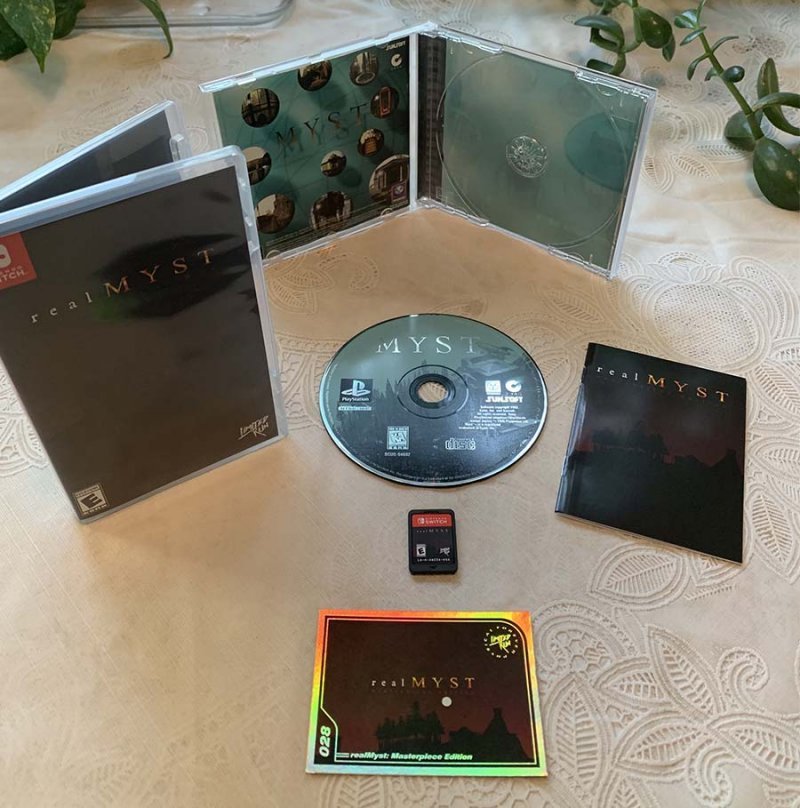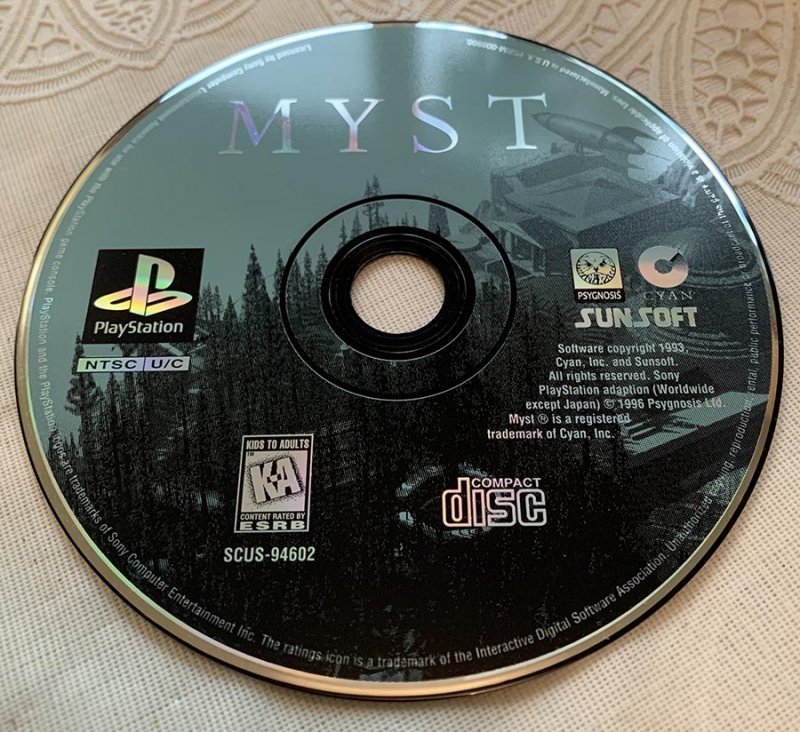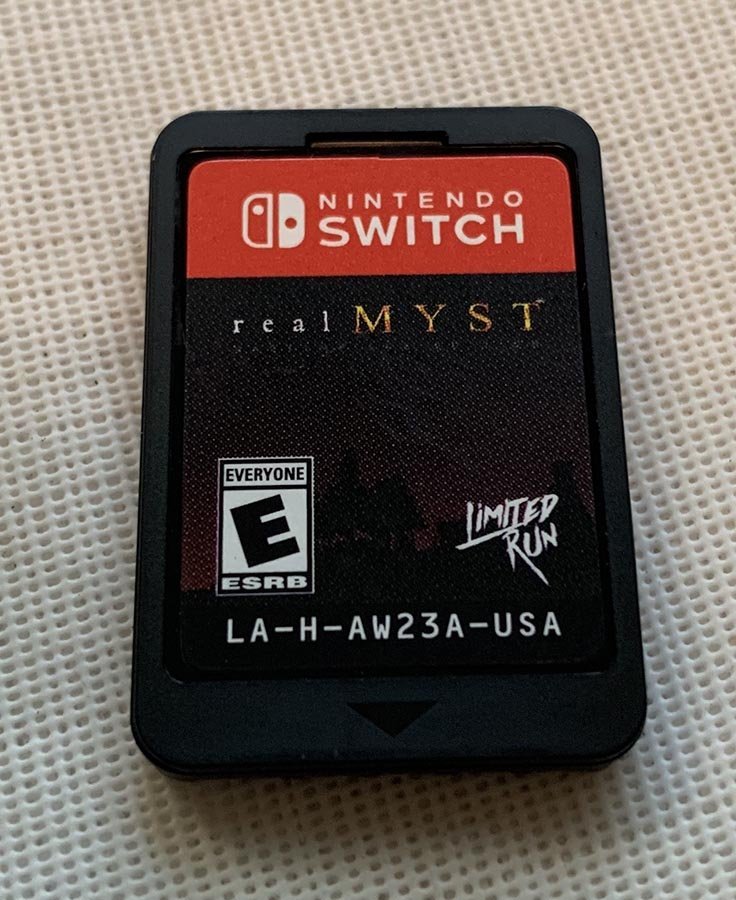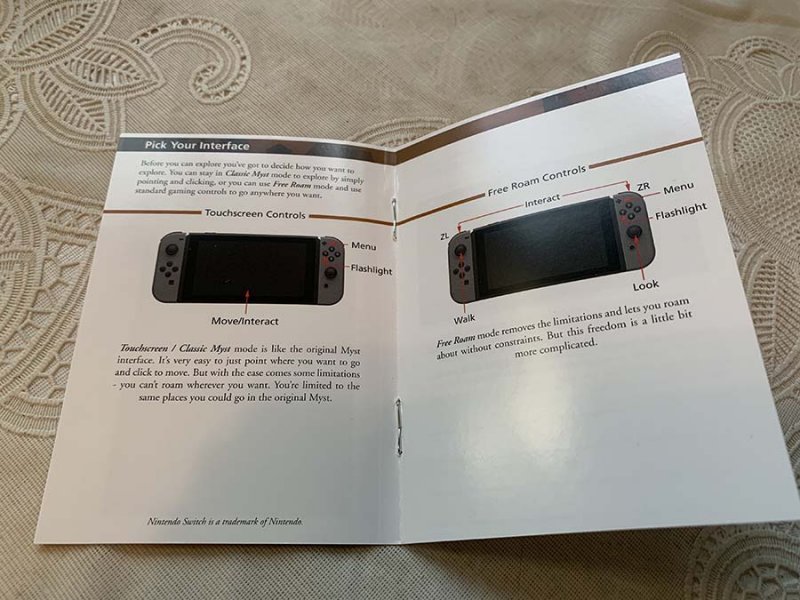
Limited Run Games does physical copies of games typically released only digitally for a variety of consoles. Today, I have a few short notes about realMYST.
This is not a review. A review is journalism of a different sort; this is more of a personal retrospective.
I received my preorder sometime last month, but it took a while to get motivated to play. I've played it before, on the Mac, a long while back. But the version I've logged the most time with is unquestionably the version issued for the Mac, which I purchased used sometime back in about 1995 ($20!).
The slides have a deliberate effect to consider as you wander through the worlds of MYST. For one, slide by slide advancement encourages you to pay close attention to the environment itself, something honestly lacking for me whenever I play games of a more realtime nature, where details tend to fly by at speed and I seldom feel compelled to take in the environments slowly. And I was all about the details of this game, which is primarily about clues embedded in environments.
But the realtime adaptation didn't stick with me. I wouldn't say I've been overexposed, but there was something lacking in this version. Arguably, I was the wrong person to try it—I'd played the game a lot, and its sequels (up to Exile), but never partook of the novels or anything else, for whatever reason. For some folk, what constitutes the totalitly of an experience is usually the first thing they're exposed to, like someone who loves Star Wars but has never seen any sequels nor been exposed to any of the other associated media.
But that was a long time ago. Time commitments also could have imposed themselves and forced me to set it aside. This happens kind of a lot, I've noticed, when it comes to games.
So the experience has been tried on a Mac, a Sony PlayStation, an iPhone, an iPad, and now, the Nintendo Switch.
I'm very glad I got it. For one, Limited Run Games only produces a small run of games, and if you don't preorder, chances are small of acquiring it later, and as of this writing, the game is now out of print. Had I not, I feel I would have regretted it. Fortunately, I was able to issue the funds at the correct time.
Gameplay is typical for a first person perspective game; the controls on a video game controller are slightly uncomfortable at first (I'm far more used to third-person games where I am explicitly controlling a character or other token, not shifting the view around itself). Some of the controls take a little bit of getting used to, but this doesn't take long.
I was fairly surprised that motion controls weren't issued buy default here, since this would make control that much more fluid and make being able to hit buttons and switches much more straightforward. Should the game receive any updates, this should be at the absolute top of the list of desirable features to include.
The port is straightforward, and, I hate to say it, but I'm going to raise the spectre of the loading screen.
Look. It's 2020. The Switch is many many many times more powerful and faster than a 1995 Macintosh with a quad-speed CDROM drive. Which, I might point out, had virtually no load times. Even if the overall experience was, well, slower as a slide show, it flowed without issue or significant pause from one frame to another or to a QuickTime movie event or switching to a new Age in the game.
For a game engineered to run on a platform thousands of times more powerful and faster which bills itself as "real" as in "real-time" seeing a loading screen harkens back to the era of the first PlayStation, arguably not a great look for a system which objectively can load a "real-time" game closer to real time. (And, I'll note, the PS version loads faster than the "realtime" version.)
The slide-show, prerendered version available for iOS are therefore superior in this regard.
Loading aside, the game is exactly as I expected it would be: a realtime version of MYST. This version also runs at 1080p, which afforded me enough detail to notice a few things.
For starters, the prerendered versions actually have more detail, in spite of being presented at a lower resolution. The compromises made in order to present a fluid experience to player does tend to upend the notion that you're supposed to catch details, but perhaps this is just me.
Otherwise, the addition of a new ("new" heh) Age—Rime—is welcome enough. The additional detail ties this product more closely to Riven and Uru, but I feel this was unnecessary, since Riven at least could stand well enough on its own.
Given that the game is out of print already, any recommendation I could issue would have to be for the purely downloadable version, which is about what I paid for a copy on CDROM back in 1995. But if I'm to be honest, the superior (to my mind) version remains the prerendered version—and this can still be had on iOS for an even more reasonable $4.99.
Still, it's a thrill to see this version again, even if I don't rank it as highly as the original. Much of that is certainly me—how I view the original over everything else, even the novels. Others may find they prefer a more fluid take, but this game is about observation, consideration, and moving deliberately in order to not miss details.
And this game is about the critical importance of details. You have to hear your way through a maze, examine the effects of the characters—and make a decision which to release—and notice clues which will lead you, the traveler, to the next Age.



